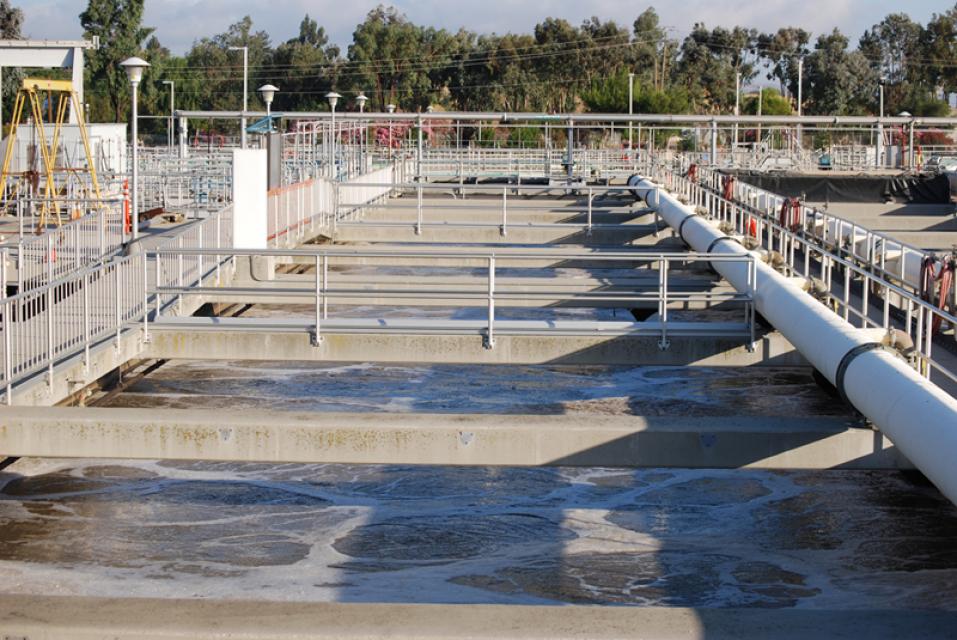Strategic Approaches to Improve Waste Water Therapy Performance and Lessen Ecological Effect
In the realm of drainage treatment, the mission for enhanced effectiveness and decreased ecological impact is a perpetual difficulty that requires critical solutions. As society grapples with the critical to manage water resources sustainably, a nuanced approach ends up being essential. The integration of advanced treatment technologies, energy-efficient processes, resource recovery strategies, enhanced nutrient elimination strategies, and clever surveillance and control systems stands for a complex structure for resolving these pushing worries. Nevertheless, what exists at the core of this complicated web of strategies is the potential to revolutionize the means we come close to waste water treatment, not equally as a process of disposal, yet as an important chance for innovation and ecological stewardship.
Advanced Treatment Technologies
Advanced membrane filtering systems have actually changed innovative wastewater treatment processes, considerably improving the removal of pollutants. This modern technology has actually verified to be very reliable in getting rid of a large array of pollutants, including drugs, hefty metals, and organic compounds, which are typically testing to eliminate through traditional treatment methods.
Moreover, membrane filtration systems provide many advantages over traditional treatment approaches. They call for much less area, produce higher-quality effluent, and are more immune to variations in influent water high quality. Furthermore, these systems are highly versatile and can be conveniently incorporated into existing therapy plants or made use of as standalone systems for decentralized applications. As the demand for tidy water remains to rise, the adoption of innovative membrane layer filtering technologies is important to guarantee reliable and sustainable wastewater treatment practices.
Energy-Efficient Processes
The integration of energy-efficient procedures in wastewater therapy systems is critical for maximizing source usage and minimizing operational prices. By carrying out energy-efficient innovations, therapy plants can substantially decrease their carbon footprint and total environmental effect. One key strategy to enhancing power efficiency in wastewater treatment is the usage of sophisticated aeration systems, such as fine bubble diffusers or surface area aerators, which can enhance oxygen transfer performance and reduce power intake. In addition, integrating power recovery systems, like anaerobic digestion for biogas manufacturing or utilizing excess warmth for thermal procedures, can aid balance out energy demands and promote sustainability.
Furthermore, optimizing procedure control and automation through making use of innovative sensors and keeping track of systems can enhance total power performance by changing procedures in real-time based upon actual need and conditions. Executing power audits and regularly checking power performance indications are vital practices to determine areas for improvement and track energy-saving efforts successfully. Overall, the adoption of energy-efficient processes in wastewater treatment not just benefits the atmosphere however additionally adds to lasting expense financial savings and functional sustainability.
Resource Healing Approaches
With a concentrate on maximizing resource usage and sustainability in wastewater treatment systems, the execution of source recovery methods emerges as a crucial aspect in enhancing functional performance. Source healing approaches in wastewater therapy include the identification and removal of useful resources from the waste stream, therefore turning what was once considered waste right into a useful asset. By applying resource recuperation methods such as nutrient elimination and healing, energy generation from natural matter, and the manufacturing of recyclable water, wastewater therapy plants can reduce ecological effect while maximizing effectiveness.

Improved Nutrient Removal Strategies
Applying sophisticated nutrient removal methods is vital for optimizing the effectiveness of wastewater treatment systems. One of the vital methods made use of for improved nutrient elimination is the process of organic nutrient elimination (BNR), which includes the elimination of nitrogen and phosphorus through organic processes.

In enhancement to BNR, advanced treatment methods such as membrane bioreactors (MBRs) and constructed wetlands can also be used to boost nutrient elimination performance. By including these sophisticated nutrient removal methods into wastewater treatment systems, municipalities and sectors can successfully decrease nutrient pollution and protect the setting.
Smart Tracking and Control Solution
Utilizing cutting-edge modern technology, the assimilation of wise monitoring and control systems changes the functional efficiency of wastewater therapy facilities. These systems incorporate innovative sensing units and data analytics to continually keep an eye on advice essential parameters such as pH degrees, turbidity, dissolved oxygen, and circulation prices in real-time. By collecting and analyzing this information, operators can gain beneficial understandings into the efficiency of the treatment procedures, allowing proactive changes to enhance treatment performance.
Smart tracking and control systems also support remote surveillance abilities, allowing drivers to gain access to real-time information and control features from off-site locations. This remote access boosts operational adaptability and responsiveness, allowing quick interventions in case of system breakdowns or changes in influent top quality. The predictive upkeep capacities of these systems help avoid devices failures and lessen downtime, click over here inevitably improving the overall dependability of wastewater therapy procedures.
Verdict
To conclude, tactical techniques such as innovative therapy technologies, energy-efficient processes, resource recovery techniques, improved nutrient removal methods, and wise surveillance and control systems play an essential role in enhancing wastewater treatment effectiveness and lessening ecological effect. By carrying out these strategies, wastewater therapy plants can boost their total efficiency, lower power intake, recoup beneficial sources, and make sure compliance with environmental guidelines. These techniques are essential for reliable and sustainable wastewater management methods.

In verdict, tactical methods such as advanced treatment innovations, energy-efficient processes, resource recovery techniques, improved nutrient removal techniques, and smart surveillance and control systems play an essential function in improving wastewater therapy performance and minimizing environmental effect.